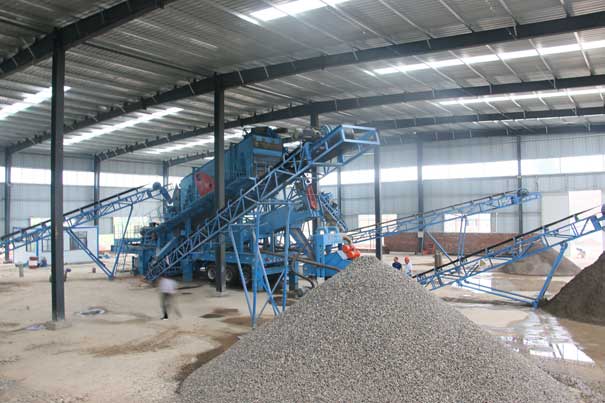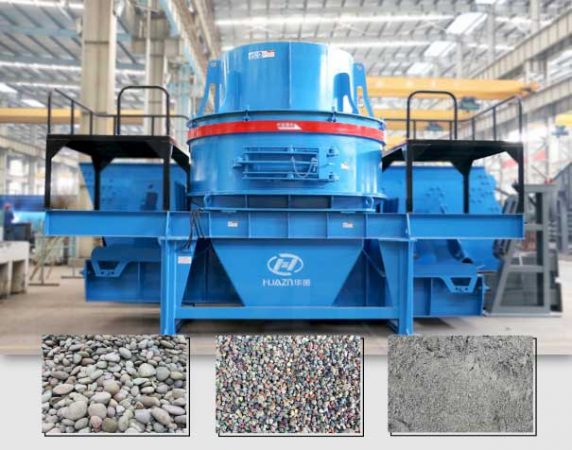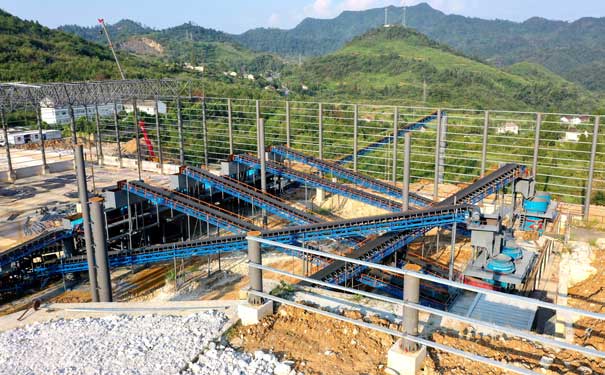The configuration of the common set of equipment for the stone production line generally adopts two-stage and three-stage crushing processes. Most sand and gravel plants usually adopt a two-stage one-closed-circuit process, that is, the second-stage crusher and the inspection and screening equipment form a closed circuit, so as to ensure that the product size meets the requirements and meet the requirements of sand and aggregate aggregates.
Building stones are common finished ore materials, granite, basalt, limestone, dolomite, etc. are the raw materials for common broken stones. They have high Mohs hardness, and the finished products are 1-2, 1-3, 2-4, stone, 05 stone powder. It is used to repair roads, airports, bridges, etc.

The complete equipment configuration of sand and gravel production line mainly includes the following types:
- Vibrating feeder + jaw crusher + impact crusher + belt conveyor + circular vibrating screen;
- Vibrating feeder + jaw crusher + cone crusher + belt conveyor + circular vibrating screen;
- Vibrating feeder + jaw crusher + impact crusher + impact sand making machine + belt conveyor + circular vibrating screen.
One-stage crushing equipment adopts large-scale jaw crusher PE1200*1500, or JC160 series jaw crusher.
According to the hardness of the ore, the second stage crushing adopts cone crusher or impact crusher.

The sand and gravel that meet the requirements of the particle size are sent to the final stockpile through a belt conveyor, and the gravel that does not meet the required particle size is returned to the second stage of crushing through the conveying equipment to be crushed again, forming a closed loop.
The procedure of the stone processing plant is generally the structural links such as feeding-coarse crushing-fine crushing-screening-conveying. However, the specific equipment to be used must be considered comprehensively according to the actual situation of the customer. The specific uses of the equipment in each link are as follows:
Feeding: In the process of stone processing, the commonly used feeding equipment is a vibrating feeder, which can uniformly and continuously feed large pieces of raw materials into the crushing equipment.
Crushing: The crushing process is generally divided into two-stage crushing or three-stage crushing. Commonly used crushing equipment includes jaw crushers, impact crushers, impact crushers, etc. Among them, the most common combination in our small stone processing plants is jaw crusher. The crusher and the impact crusher are combined to form a secondary crushing. Both of these devices are very cost-effective and have low investment, but they are very efficient and have guaranteed returns.
Screening: The screening process generally runs in the later stage of the production line. For sand and gravel screening, we often choose a circular vibrating screen. It moves in a circular motion and is suitable for screening materials with large specific gravity and large particles. In the production line, it mainly plays these two uses: one can screen out the materials that do not meet the requirements and reprocess them; second, it can choose one layer, two layers or multiple layers to sieve the materials into several specifications of different sizes.
Conveyor: Conveyor is a large number of equipment in the production line, and it plays a role in material transmission in the production line.

The initial investment of small stone processing plants is small. Compared with larger processing plants, the investment in site and equipment is relatively small, but the customer’s benefits are considerable and can quickly pay back. In addition, depending on the choice of equipment, factors such as the length of the working hours and the different crushing materials will affect the output of the small stone processing plant. If you want to know the profit of the small stone plant, you must consider various aspects.

